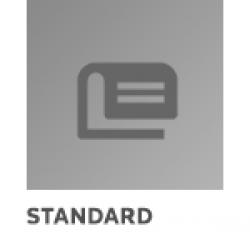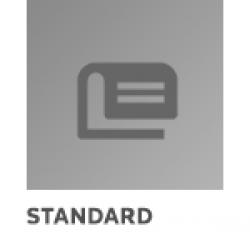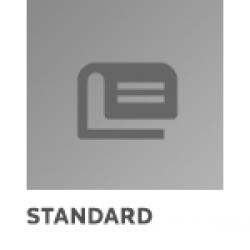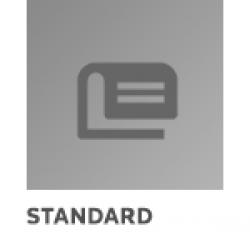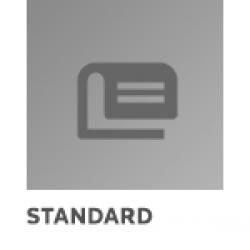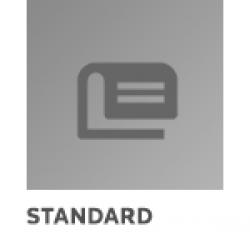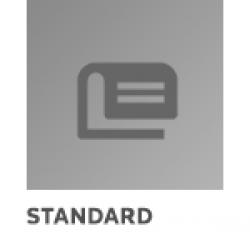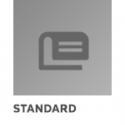Cart
0
0
item(s)
-
$0.00
No products
To be determined
Shipping
$0.00
Total
Quantity
Total
Product successfully added to your shopping cart
There are 0 items in your cart.
There are 0 items in your cart.
Total
UL 1425
UL 1425 Cables for Non-Power-Limited Fire-Alarm Circuits
standard by Underwriters Laboratories, 01/26/2015
Reduced price!
M00000514
New product
Full Description
Please note: All interim revisions for this edition available at time of your purchase will be included.Cables for Non-Power-Limited Fire-Alarm Circuits
UL 1425
1 Scope
1.1 This Standard states the construction, test, and marking requirements covering the safety of electrical and electrical/optical-fiber cables rated 60C to 250C and intended for 150-volt and lower-potential non-power-limited circuits that are controlled and powered by a fire-alarm system. These cables are for installation in buildings as specified in Article 760 and other applicable parts of the National Electrical Code (NEC), NFPA 70. Cables covered by these requirements are: a) Type NPLFP - These cables are for installation in "other spaces used for environmental air" [See NEC 300-22(c)]. b) Type NPLFR - These cables are for installation in vertical runs in a shaft or for installation in vertical runs that penetrate more than one floor. c) Type NPLF - These cables are for general-purpose fire-alarm use in buildings. General purpose does not include use as plenum or riser cable.1.2 These cables contain two or more insulated circuit conductors with or without one or more insulated or bare equipment-grounding conductor(s). Each insulated circuit and grounding conductor is rated for 600 volts. These cables do not contain any coaxial members. These cables are rated for 150 volts and are so marked.
1.3 Armored cables are covered by interlocked metal strip or a smooth or corrugated metal sheath with or without a jacket over the armor. Cables for encasement in concrete, mortar, other masonry, plaster, or similar construction have metal armor and a jacket over the armor. Cables for direct burial in the earth (see markings in 1.8) are subject to a 1000-pound crushing test. Cables for direct burial are not required to be armored. Cables for direct burial that are armored have a jacket over the armor. All other cables (unarmored, flat or round) have an overall jacket.
1.4 Cables of materials that qualify for temperatures above 60C (140F) are marked with a temperature rating. Temperature marking is not required for cables that qualify for a temperature rating of 60C (140F).
1.5 Cables that contain one or more electromagnetic shields (see 8.1 - 8.3 regarding constructions) are not required to be marked to indicate the presence of the shielding. A shielded cable that is marked has "shielded" on the tag and either on the overall cable jacket or legible through the jacket.
1.6 Cables that qualify for exposure to sunlight (720-hour sunlight-resistance test - see 25.1) have "sun res" or "sunlight resistant" on the tag and either on the overall cable jacket or legible through the jacket.
1.7 Cables that qualify for burial directly in the earth (1000-pound crushing test - see 29.1) have "dir bur", "direct burial", or "for direct burial" on the tag and either on the overall cable jacket or legible through the jacket. Each insulated circuit and grounding conductor in direct-burial cables is insulated for wet locations (see 7.3.1 and 30.1 - 30.8).
1.8 A cable that contains one or more optical-fiber members has "OF" supplementing the type letters and is marked in accordance with 42.1(c).
1.9 These requirements do not cover cables that contain only optical fibers. Optical-fiber cables without electrical conductors are covered in the Standard for Optical Fiber Cable, UL 1651.
1.10 These requirements do not cover cables for electric-light, power, control, Class 1, Class 2, or Class 3 circuits.
1.11 These requirements do not cover cables for power-limited fire-alarm circuits (see UL 1424).
1.12 Smoke and flame tests are as follows for the cables covered in these requirements: a) PLENUM CABLES - All Type NPLFP cables are tested for smoke and flame characteristics as specified in Smoke and Flame Testing of Plenum Cables, Section 22, which references the National Fire Protection Association Standard Method of Test for Flame Travel and Smoke of Wires and Cables for Use in Air-Handling Spaces, ANSI/NFPA 262. A cable that complies exhibits a maximum flame-propagation distance that is not greater than 5 ft, 0 inch or 152 cm, a peak optical density of smoke produced of 0.50 or less (32 percent light transmission), and an average optical density of smoke produced of 0.15 or less. b) RISER CABLES - Jacketed Type NPLFR cables are tested for flame-propagation characteristics as specified in Flame Testing of Riser Cables, Section 23, which references the Standard Test for Flame-Propagation Height of Electrical and Optical-Fiber Cables Installed Vertically in Shafts, UL 1666. A cable that complies exhibits a flame-propagation height under 12 ft, 0 inch or 366 cm and attains a temperature no higher than 850.0F (454.4C) at a height of 12 ft, 0 inch or 366 cm. c) GENERAL-PURPOSE CABLES - Jacketed Type NPLF cables comply with one of the two 70,000 Btu/h (20.5 kW) vertical-tray flame tests specified in Alternative Vertical-Tray Flame Tests of General-Purpose Cables, Section 24. The cable manufacturer chooses one of the following tests: 1) The UL test referenced in 24.1.2 - 24.3.3. These paragraphs apply the test method described as the UL Flame Exposure (smoke measurements are not applicable) in the Standard for Vertical-Tray Fire-Propagation and Smoke-Release Test for Electrical and Optical-Fiber Cables, UL 1685. 2) The FT4/IEEE 1202 test referenced in 24.1.2 and 24.4.1. These paragraphs apply the test method described as the FT4/IEEE 1202 Type of Flame Exposure (smoke measurements are not applicable) in the Standard for Vertical-Tray Fire-Propagation and Smoke-Release Test for Electrical and Optical-Fiber Cables, UL 1685. This test differs from the UL test in loading (a greater number of cable lengths are used, with small cables bundled, and the spacing between cables or bundles is limited), burner angle, and failure criterion. A cable that complies is eligible to be marked "FT4/IEEE 1202" or "FT4" on the surface or on a marker tape as indicated in 41.1(i).





